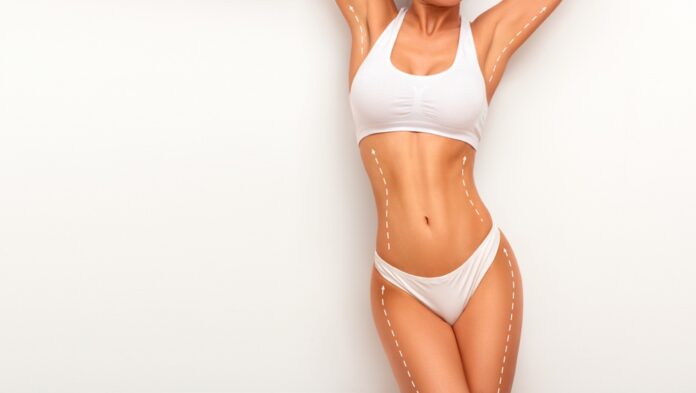With winter coming, we take a look at the ins and outs of liposuction and reveal why it still remains one of the most popular procedures for body contouring.
You may be thinking liposuction has had a bit of a rough ride, what with all the shiny new non-surgical body contouring fat-busting treatments that are blitzing the market. However, that’s not quite the case. Liposuction has remained one of the top procedures year after year, and its popularity is showing no sign of slowing down.
The difference is that liposuction can complete a bigger reduction in larger pockets of fat; typically something non-surgical devices just can’t manage well. Rather than multiple non-invasive body contouring treatments, liposuction can achieve results with just one procedure.
Using current techniques, the procedure is more gentle and comfortable than ever before. Downtime is minimised (usually two or three days), which makes the biggest difference for people who lead busy lives.
Liposuction
Liposuction is a surgical procedure, performed either under anaesthetic with the patient asleep or with local anaesthetic using the tumescent technique where the patient is awake, to remove deposits of fat from specific areas of your body.
It can be performed almost anywhere on the body where there are pockets of fat, including your neck, arms, stomach, back, chest, buttocks, thighs and ankles, and is performed as day surgery.
Liposuction allows the treatment of one or more areas in a reasonable period of time and the practitioner can be judicious on how much fat is removed.
Generally, the area to be treated is infiltrated with a tumescent fluid containing local anaesthetic and a vaso-constrictor which reduces bleeding and bruising, before small cannulas are used to vacuum out the fatty tissue. Alternatively, a syringe can be used to withdraw the fat.
Power-assisted liposuction, where radiofrequency, ultrasound or laser technology is used to improve liposuction results, can help increase your skin contracture, while toning and tightening your skin’s surface.
Just like any form of cosmetic enhancement, liposuction is no panacea. It’s important to remember the risks of surgery and that liposuction is not a way of losing masses of weight or a cure for obesity.
What happens next?
After surgery, expect to be swollen, bruised and sore for a few days. It’s also common to feel some numbness in the treated areas, although this should go away in the first few weeks.
You’ll usually wear a compression garment for about three weeks to help aid in skin retraction and healing. You can typically return to work after three to five days. It’s important to remember that all liposuction is surgery and requires diligent postoperative care.
Final results – a trimmer looking, more proportionate and shapely form – can be seen from around three to four months after all swelling subsides. Results are permanent so long as you maintain your weight and follow a healthy lifestyle.
The #2 Cosmetic Surgical Procedure
Although there is no definitive data about cosmetic surgery trends in Australia, we typically follow American statistics to provide an insight into emerging and changing trends on our own shores. Indeed, the current statistics from the American Society for Aesthetic Plastic Surgery reveal liposuction is the number-two performed cosmetic surgery in the US, second only to breast augmentation.












